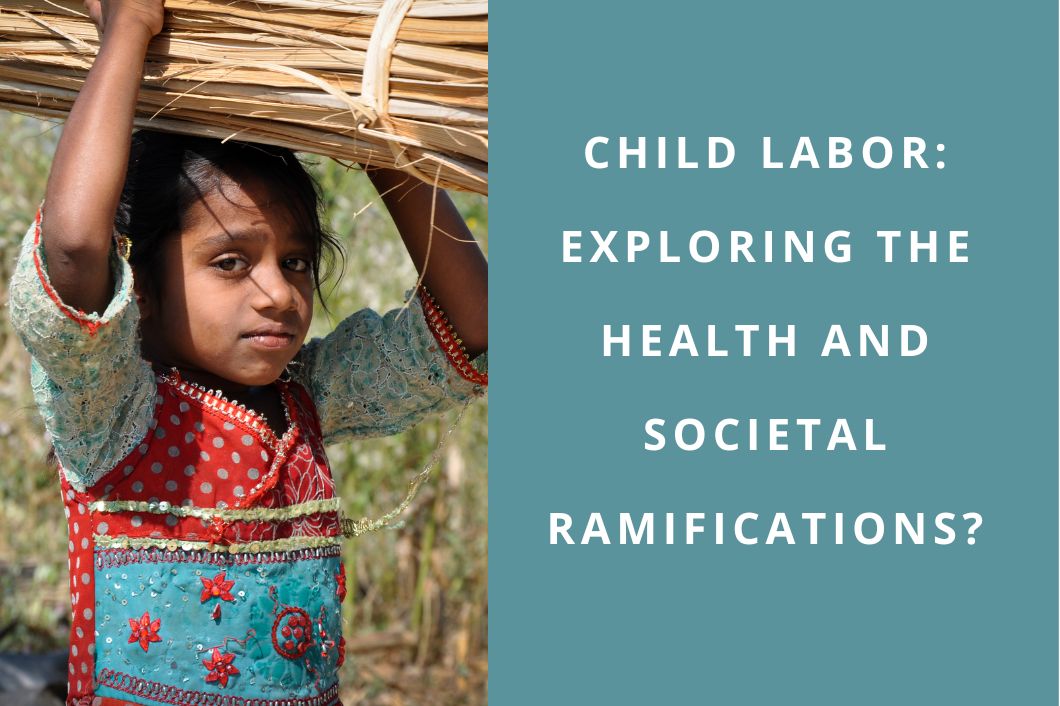Child Labor: Exploring the Health and Societal Ramifications?

Child labor, a deeply troubling manifestation of child exploitation and societal indifference, remains a pressing global concern. Understanding the multifaceted social and health implications stemming from it is imperative for targeted interventions and, more significantly, the formulation of sustainable national development policies. Consequently, safeguarding children from the economic exploitation of child labor stands as a fundamental pillar in the pursuit of lasting national progress.
How does child labor impact the physical well-being of children?
Child labor exerts adverse effects on the psychological, emotional, and physical well-being of children. Numerous research endeavors have illuminated the fact that children engaged in laborious tasks confront various health issues, especially those toiling in hazardous vocations.
The repercussions of child labor in India continue to escalate. Alarmingly, 7.8 million Indian children are compelled to juggle work responsibilities alongside their education, a deeply unsettling statistic. Many of these young individuals deviate from the path of formal education, instead becoming ensnared in the web of child labor. Deprived of a standard education, they remain trapped in menial, labor-intensive occupations well into their adulthood.
What underlies the root causes and outcomes of child labor in India?
The ramifications of child labor are multifarious, with a pronounced toll on children’s health. These children are frequently exposed to perilous substances and operate dangerous machinery. Regrettably, they allocate little or no attention to their education or mental well-being, enduring extended, grueling working hours.
Child labor’s repercussions on health and social development
Societal and Economic Impact:
The dynamics of the economy and child labor share a profound connection. The consequences of child labor in India are emblematic of underdeveloped nations characterized by stark social inequalities. Eradicating this menace poses a formidable challenge, as it necessitates confronting entrenched family poverty through educational initiatives.
Physical Ramifications of Child Labor:
Child labor may give rise to chronic ailments and diseases, contingent on the nature of the tasks undertaken. This is attributable to the fact that children not only perform duties akin to those of adults but do so while their physical and mental faculties are still in a state of immaturity. Malnutrition compounds these issues.
Educational and Emotional Consequences:
A staggering 60 million children globally remain bereft of access to formal education. Instead, these youngsters spend their formative years in arduous, sometimes abusive conditions. This harsh reality often precipitates stress, despondency, and a compromised sense of self-worth.
Child Labor and Migration:
The repercussions of child labor in India frequently manifest through child migration, often involving accompanying family members. Seasonal labor opportunities in agriculture and brick kilns are among the primary drivers of child migration. Tragically, children often join their parents in labor to supplement family income, as additional labor remains pivotal for many migrant households.
Child Labor Amidst the Pandemic:
In recent years, considerable strides have been made in combatting the scourge of child labor in India. However, the emergence of the COVID-19 pandemic threatens to undo years of progress and exacerbate the issue. The pandemic has ushered in heightened unemployment, compelling families to resort to coercing their children into labor. The closure of schools further exacerbates the vulnerability of children, increasing the likelihood of their involvement in child labor.
Eradicating Child Labor:
A more profound exploration and heightened public awareness campaigns are imperative to upscale the battle against child labor and comprehend its implications in India. The government must acknowledge the magnitude of this predicament, its evolutionary trajectory, and its far-reaching consequences on families and children alike.


